|
Just stepping into the auditorium of the magnificently restored Emerson Colonial Theatre in Boston takes the breath away. The 118-year-old historic theatre, with its long history of presenting legendary stars and Broadway tryouts, reopened July 2018 with a monumentally stunning production of Moulin Rouge, the stage adaptation of Baz Luhrmann’s 2001 movie. Starring Aaron Tveit, Karen Olivo, and Danny Burstein, the musical with a book by John Logan, a potpourri score of popular music, and a glittering physical production on a grand scale, there is no secret that the show has set its sights on Broadway. That it should succeed there seems likely.
It tells the story of a young composer, Christian, who comes to Paris to write, embraces the Bohemian ideals of truth, beauty, and freedom, is befriended by Toulouse Lautrec and Santiago, an Argentine tango dancer, and ends up writing a musical revue for the Moulin Rouge cabaret, where he meets and falls hopelessly in love with its star, the courtesan Satine. The course of their romance is fraught with passion and pain, as Satine is controlled by Zidler, the Moulin Rouge’s impresario, and her wealthy and jealous protector, the Duke of Monroth. Like Dumas’ Lady of the Camelias, Satine, too, is ill-fated, and her tragic death becomes the inspiration for Christian to write his magnum opus. John Logan’s book is tightly written and preserves all the iconic elements of the film, at the same time that it intensifies the dramatic conflicts, making the romantic story one of a woman torn among
three men, only one of whom she truly loves. The script keeps all the best musical moments from the movie and adds a great many more songs to flesh out the action. While it is a time-told tale that is predictable, it remains strangely compelling.
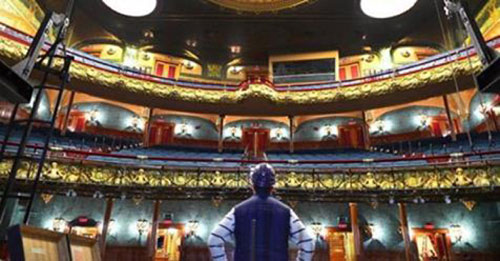
Essentially a juke box musical that employs a wide range of song styles from vaudeville to familiar classics (Bizet) to musical show tunes to rock and pop covers, the overall effect is often incongruous and jarring and at the same time subtly clever. Much of the fun is picking up on the musical allusions and hidden witticisms. The musical team, headed by Justin Levine with Cian McCarthy leading the fifteen-person orchestra, creates a vivid tapestry of sound.
Translating Luhrmann’s film to the stage poses a great many challenges. The movie is saturated in color, distinguished by rapidly shifting camera angles, swooping cinematic vistas and aglow with the lights of the cabaret and Paris itself. There is an air of grotesquerie, a sense of circus and a conscious bringing to life of Toulouse-Lautrec paintings that also mark the visual concept. That the stage version convincingly captures all this world with its garishness and sparkle is no small feat!
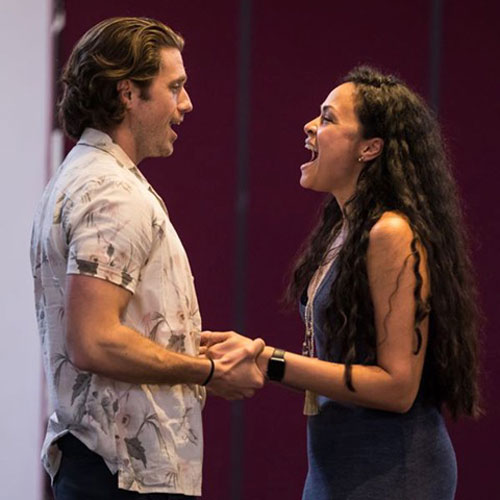
A significant part of this success is due to the amazing physical production. Derek McLane’s set design is simply splendid! The three-story, gilded interior of the Emerson Theatre is used to its fullest with a giant windmill affixed to the stage right box and a huge royal blue, two-story elephant on the the stage left box – both iconic images from the film. The stage is extended over parts of the orchestra pit with catwalks and VIP seating, so that those audience members become patrons of the Moulin Rouge as the action and dancing takes place around them. The interior of the Moulin Rouge with all its sleazy glitz is vividly created with stairs that rise and sink, trapezes, and gold studded boxes. The other locales – the garrett with the neon sign “L’Amour”, the Boulevard Beaumarchais with its pastel elegance, the ever-present dome of Monmartre and the Eiffel Tower - move
seamlessly into place, despite their size and scale. All this shimmers in Justin Townsend’s lighting design that runs the gamut from twinkling city lights to blazing cabaret spotlights to the color-drenched fantastical world of the performers and the darker, somber Bohemian quarters. Catherine Zuber’s costumes are elaborate evocations of the Belle ├ëpoque with its layered classes of society, and Peter Hylenski manages a complex sound design brilliantly.
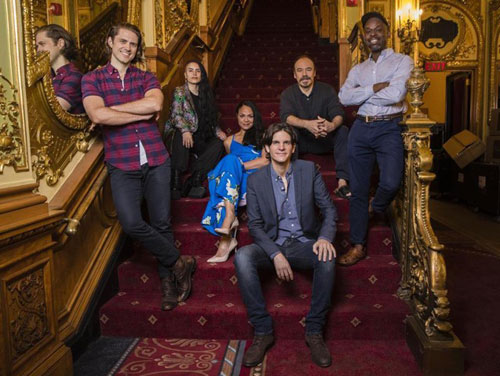
Director Alex Timbers brings high-drive energy to the staging, using the space fully and involving the audience in the feel of the action. With the exception of the opening pantomime - (meant, no doubt, to reflect the circus montage of the film) – that needs trimming, Timbers sets a brisk, breathless pace, manages the stylistic transitions almost seamlessly and takes the requisite time to make the book scenes credible and touching. Sonya Tayeh’s choreography is polished, provocative, and versatile. Just as the score is eclectic, so, too, are the dances ranging from jazz, ballet, tango, and Can Can, and she knows how to create the sense of spectacular.
The cast is stocked with strong triple threat performers with an ensemble that executes the big numbers with panache. The supporting roles are well limned with Robyn Hurder and Jacqueline B. Arnold as chorus girls Nini and La Chocolat making a strong impressions. Sahr Ngaujah plays Lautrec convincingly with a worldly wise air that masks his unrequited love for Satine, though his vocal moments vary in quality depending on the style of the song. Ricky Rojas is a sexy, dangerous, feline Santiago who makes a vivid impression in his tango scene. As the Duke of Monroth, Tam Mutu masks his murderous nature behind a fa├žade of dignified aristocratic bearing that slowly unravels as he is thwarted in his passion for Satine, and he does justice to his solo vocal moments. Danny Burstein turns in a virtuoso performance as Harold Zidler, part Cabaret emcee, part pimp, part soft-hearted father figure.
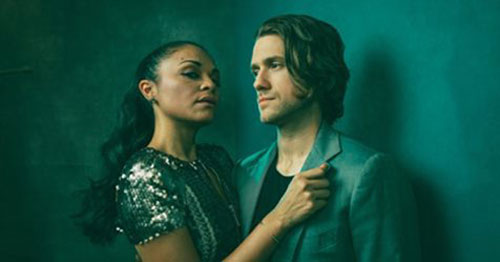
Karen Olivo’s Satine offers a very different take on the character from that of the movie’s Nicole Kidman. Olivo plays the cabaret star and courtesan as jaded, tough as nails, and completely pragmatic. It is not until well into the second act, as her illness advances, that the audience begins to feel the disintegration of this personal armor. Vocally she brings a strong vibrant presence to the role, and she is best in the big belting numbers, lacking, for my taste, the delicate charm or tenderness for the romantic songs like the “Elephant Love Medley” and “Come What May.” Still, she is an imposing dramatic and dance presence and brings star quality to the show.
For this reviewer, the most commanding performance, both vocally and dramatically, is given by Aaron Tveit as Christian. He plays the composer with a disarming charm, a youthful naivet├ę that turns to maturity through suffering, and a kind of fresh genuineness that contrasts perfectly to the world of glitz and shadows that swirls around him. Tveit’s in- the-moment style of acting enables him to deliver some of the book’s self-consciously clich├ęd lines with a credibility of emotion that transforms them. He is a lithe, feline dancer, and he can interpret a song – in virtually any style from legitimate show tunes to pop and rock – like no one else. Put quite simply, Tveit is nothing short of mesmerizing as a singing-actor, and he gives the show its standout vocal highlights with a melting “Your Song,” a passionate “Come What May,” and a gut-wrenching “El
Tango de Roxanne.” This is a star vehicle for his long-awaited return to Broadway, and he fills every moment of it completely.
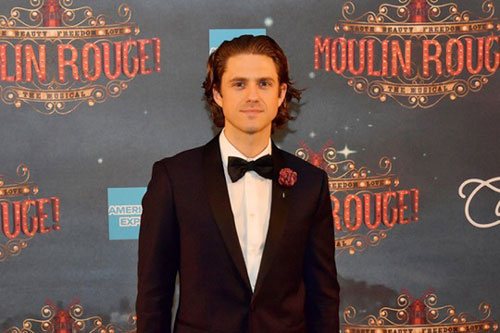
Moulin Rouge has all the glamour and the thrill of a grand Broadway show. It continues its run at the Emerson Colonial Theatre until August 19th, and then will, no doubt, seek a home on the Great White Way. One wonders which New York theatre will be grand and big enough to house the physical production, which surely has been built with transfer in mind. But wherever it takes up residence, one can only wish it a long and prosperous run. It is a beautifully crafted, exhilaratingly performed show that combines the nostalgia of a timeless love story retold in a contemporary vocabulary. Like the Paris in which it is set, it sparkles with light and love.
|